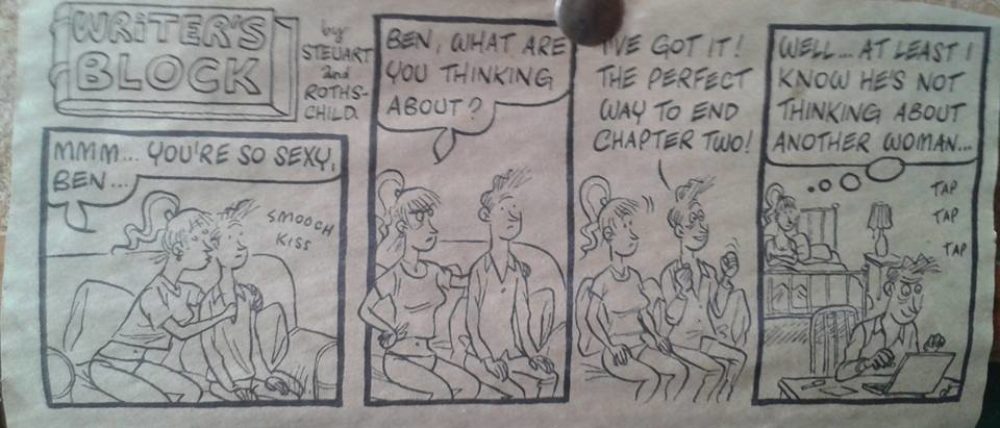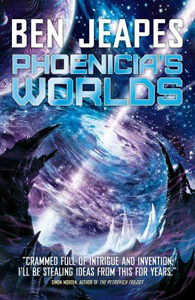The plural noun in the title of Ben Jeapes’s Phoenicia’s Worlds indicates not only multiple settings (and casts and viewpoint characters) but the several subgenres that make up the book’s larger story about the struggles of and over humankind’s first extrasolar settlement. La Neuva Temporada is the planet-size satellite of a gas giant 20 light-years from Earth, fundamentally habitable but gripped by an ice age. Advanced technologies, supported by a logistical chain that reaches back to the homeworld via a wormhole gate, make life manageable and promise to warm the world faster than natural processes would. But the catastrophic collapse of the wormhole simultaneously cuts the colony off from its lifeline to Terra and damages that technological base, threatening gradual freezing and starvation, unless the connection can be remade.
The first wave of settlers arrived on the sub-light starship Phoenicia, built and launched as the last gasp of a European dictatorship that exhausted its resources in supporting the project. The colonists brought with them not only the means of establishing the wormhole and a high-tech beachhead, but also a cargo of social and political baggage that has proved to be less useful: the ethno-cultural nonsense of Los Hijos de Castilla, a “micro-clan dedicated to reviving the mores and culture of old Spain” (think of John Barnes’s Thousand Cultures stories). The resulting social system reflects the elitist-verging-on-racist attitudes of this dominant group: although the colony is nominally an AI-mediated democracy, prestige and real power remain in the hands of the descendants of the hijo founding families, which have set themselves up as a de-facto aristocracy.
These initial conditions generate two of the book’s supporting subgenres: a generation-spanning family saga and a melodrama of class-driven intrigue, rebellion, and revenge. The family-saga side focuses on the tensions at play in the Mateo clan, with brothers who are in various ways the heirs of the hijo power structure, the schisms it has fostered, and the complicated and difficult relationships with their father and each other. Felipe and Alex have, behind their father’s back, hatched a plan to make their own fortunes by awakening the mothballed Phoenicia and mounting a secondary interstellar exploratory expedition. But the collapse of the wormhole intervenes, and the mission is reconfigured to make the multi-decade trip to Earth to re-establish a wormhole gate. A third subgenre kicks in when Phoenicia reaches Earth and Alex encounters intrigues, conspiracies, and conditions that threaten the ship’s rescue mission.
Meanwhile, baby brother Quin, born just as disaster strikes Nueva, grows up in the middle (and sometimes at the margins) of the colony’s homegrown tensions and sometimes-violent changes in power. The post-disaster narrative alternates between viewpoints and story lines: Alex’s encounters with unexpected allies and opponents and underground organizations in Earth space; and Quin’s first-person account of coming of age in the difficult environment of a world struggling for survival, while also undergoing a slow-motion social and political revolution. When the brothers’ stories finally reconverge, secrets are revealed and power structures and social and family dynamics get rearranged.
This is a dense, busy, skillfully-designed future setting that draws on a wide range of SF conventions, tropes, inventions, and machineries. “Headspace’” is an immersive computational/communication environment available via implants; “black boxes’” are powerful AIs that can behave like persons (as the governing intelligence of Phoenicia does); the Discourse and Lawcore are the AI/headspace-enabled bases of the Nuevan governmental-legal system. There are space elevators, orbiting pseudo-suns, matter-annihilation starship drives, wormholes that depend on quantum-entangled particle pairs, and so on. But the book seems more interested in those conventions as story-enablers than as Nifty Ideas in their own right – they are just there, Heinlein-style, as part of the environment, the way they might appear to a character. (Though the wormhole/entangled-particle technology does get a brief chalk-talk to explain why it’s necessary to return to Earth to build a new portal.)
Against this solidly-built backdrop, we watch the social and generational tensions play out, wonder how Alex is going to deal with a hostile Earthside faction that cares little about the fate of Nueva, follow Quin as he works with and against the shifting power structures of the troubled world that was born the same day he was – and wonder whether and how each will adapt to changing metaphorical and literal climates. This is not ground-breaking SF – there are no amazing new imaginary technologies or exotic aliens or funhouse booga-boogas. Instead there is something just as hard to pull off: a story that uses the resources of the genre to build an engaging blend of adventure and intrigue in a convincingly-detailed future world.
– Russell Letson

